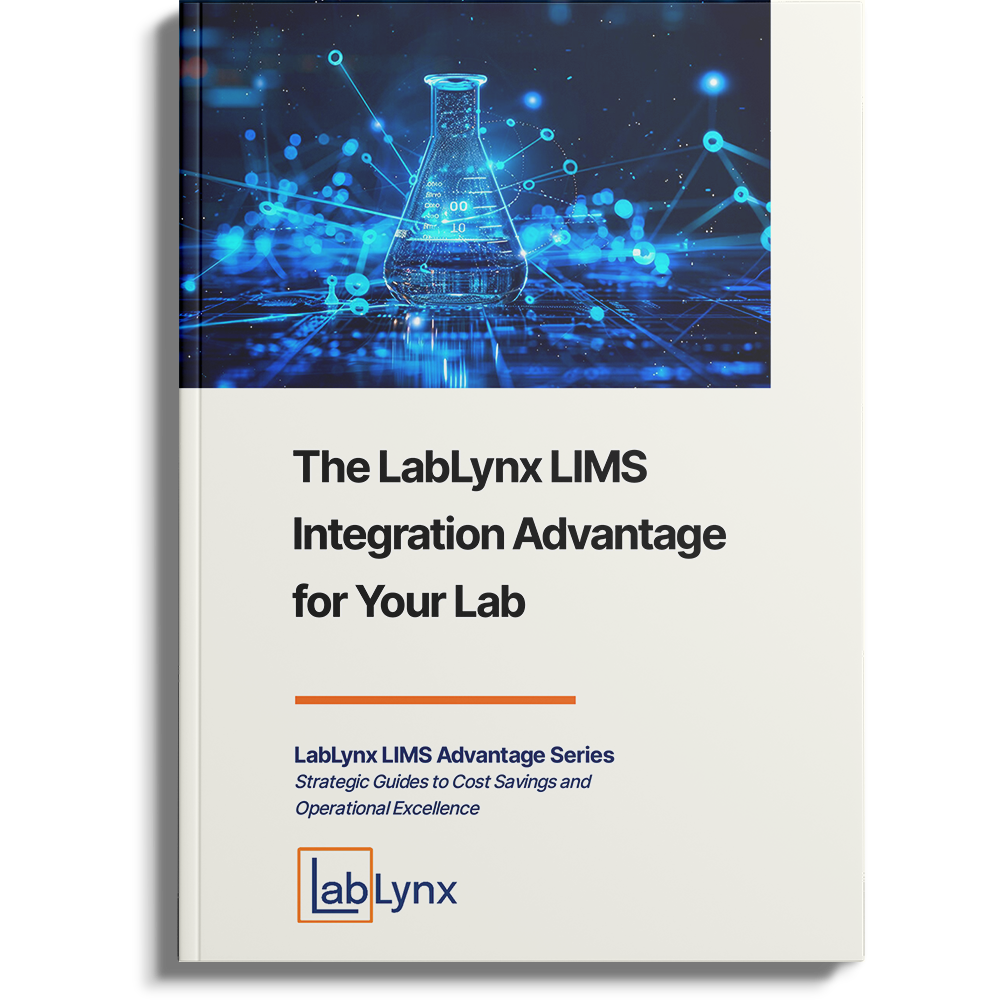
Imagine this scenario: You have a cutting-edge DNA sequencing laboratory on the East Coast and a talented scientist who excels at chemical synthesis and compound screening working in your West Coast lab. Recognizing the potential synergy between their research specialties, the labs collaborate to accelerate their progress. However, they soon realize that distance, incompatible data management systems, and communication barriers impede their collaboration. Can a laboratory information management system (LIMS) help?
Every attempt to exchange research findings and data becomes a tedious process of manual transfers and data format conversions. In the absence of a cohesive, centralized system, the process of monitoring changes and obtaining the latest information becomes an intricate and prone-to-error undertaking. Consequently, your researchers waste precious time and resources on redundant experiments.
Collaboration plays a crucial role in advancing knowledge and making breakthrough discoveries. However, collaboration among multiple laboratories can be a challenging endeavor. Coordinating efforts, sharing data, and ensuring seamless communication are just a few of the hurdles scientists and researchers face in multi-lab environments. Fortunately, the laboratory information management system (LIMS) has emerged as a software solution to address these challenges and boost collaboration. This article will explore the need for seamless collaboration in modern scientific research and how a LIMS can revolutionize multi-lab environments.
The need for seamless collaboration in modern scientific research
The landscape of scientific research has witnessed a shift towards collaborative endeavors, where scientists and researchers from different laboratories and institutions unite to tackle new challenges. This approach fosters the sharing of valuable resources, varied expertise, and extensive datasets, ultimately yielding research outcomes that are comprehensive in scope and profound in impact. However, traditional collaboration methods often struggle to meet the demands of modern research. Email chains, shared network drives, and manual data entry introduce inefficiencies, data inconsistencies, and communication gaps. To overcome these challenges and optimize collaborative efforts, the adoption of a seamless and integrated platform is essential. One such tool is a LIMS.
Understanding LIMS and its role in collaboration
A LIMS is a sophisticated software solution tailored to enhance the efficiency of laboratory operations and data management. A LIMS acts as a centralized platform that facilitates the storage, organization, and analysis of scientific data while optimizing laboratory workflows. It allows researchers to track samples, record experimental details, manage inventory, and generate reports, among other functionalities. A LIMS also facilitates data management and helps ensure compliance with regulatory standards.
A LIMS is ideally suited for multi-lab collaboration because it can centralize and standardize data management processes. By implementing a LIMS across multiple labs, scientists and researchers access a unified platform that enables seamless collaboration and data sharing. They can easily exchange information, share experimental protocols, and collaborate on projects, regardless of geographical barriers or other differences. Finally, a LIMS also promotes transparency, efficiency, and accuracy, fostering a culture of collaboration and driving scientific progress.
Key features of a LIMS for multi-Lab collaboration
Unlocking the true potential of multi-lab collaboration requires leveraging the key elements of a LIMS. From centralized data storage and access to real-time communication tools to workflow optimization, a well-designed LIMS provides a comprehensive list of functionalities that enhance collaboration.
Centralized data storage and access
One of the functionalities inherent in a LIMS is its capacity to consolidate data storage, eliminating the dependence on disparate systems. By adopting this centralized approach, the task of manual data transfer is eliminated, effectively mitigating the potential hazards of data loss or replication. This ability to access data in real-time empowers scientists in multi-lab environments, fostering informed decision-making based on the most up-to-date information available.
Real-time communication and collaboration tools
A LIMS offers a range of communication and collaboration tools that enable real-time interaction among scientists and researchers. Features such as instant messaging and discussion forums facilitate quick and effective communication, irrespective of physical location. Researchers can exchange ideas, seek feedback, and resolve queries without delay, fostering a sense of shared purpose. Real-time collaboration tools enhance productivity, minimize misunderstandings, and promote knowledge sharing among multi-lab teams.
Project management and workflow optimization
Efficient project management and workflow optimization are critical for successful multi-lab collaboration. A LIMS provides features that allow researchers to define project timelines, assign tasks, and track progress. It automates repetitive tasks, reducing manual effort and minimizing errors. By streamlining workflows, a LIMS enhances efficiency and ensures that research projects progress smoothly, even in complex multi-lab environments.
Benefits of using a LIMS for collaboration
Laboratory personnel are able to unlock an array of benefits for collaborative research endeavors using a LIMS. From improved communication and information sharing to streamlined workflows and enhanced data integrity, a LIMS revolutionizes how scientists collaborate, enabling them to accelerate discoveries and achieve impactful results.
Improved communication and information sharing
A LIMS improves communication and information sharing in multi-lab environments. Researchers can easily communicate updates, share protocols, and exchange insights, fostering a collaborative atmosphere. With streamlined communication channels, scientists can seek input from peers, validate experimental findings, and accelerate the pace of discovery. Effective communication and information sharing lead to enhanced collaboration and improved research outcomes.
Streamlined workflows and reduced duplication of efforts
In traditional multi-lab environments, researchers often duplicate efforts. A LIMS eliminates this duplication by providing a comprehensive overview of ongoing research activities. Scientists can quickly search and access relevant data, preventing redundant experiments and efficiently utilizing resources. By streamlining workflows and reducing duplication of efforts, a LIMS optimizes productivity and maximizes the impact of collaborative research.
Enhanced data integrity and traceability
Data integrity and traceability are critical in scientific research. A well-designed LIMS ensures data integrity by implementing security measures and validation checks. It tracks every change made to the data. The LIMS also maintains an audit trail and provides version control. With enhanced data integrity and traceability, scientists can confidently collaborate and build upon each other’s work, leading to more accurate and impactful scientific discoveries.
Addressing security and confidentiality concerns in multi-lab collaboration
A LIMS offers a framework designed to uphold data integrity, adhere to stringent regulatory standards, and safeguard the intellectual property rights of researchers. A LIMS can help build trust and confidence within collaborative research environments, instilling a sense of assurance among scientists and enabling them to engage in cooperative endeavors with peace of mind.
Ensuring data security and compliance
In multi-lab collaboration, data security and compliance are of utmost importance. A LIMS incorporates security measures to protect sensitive research data from unauthorized access, data breaches, and cyber threats. It enables researchers to define user roles, access permissions, and data encryption protocols. Furthermore, a LIMS helps laboratories comply with regulatory standards and data protection laws by providing features such as secure data transfer protocols.
Safeguarding intellectual property and confidential information
Collaborative research often involves the exchange of intellectual property and confidential information. A LIMS includes mechanisms to safeguard such valuable assets. It allows researchers to define access restrictions on sensitive data, protecting it from unauthorized sharing or misuse. Additionally, a LIMS offers secure file transfer capabilities, making sure that intellectual property remains confidential throughout the collaborative research process. By safeguarding intellectual property and confidential information, a LIMS instills trust among collaborators and promotes long-term partnerships.
Selecting the right LIMS for multi-lab collaboration
When selecting a LIMS for multi-lab collaboration, it is crucial to identify specific requirements and objectives. Different labs have unique needs and research priorities, and the chosen LIMS should align with these requirements. Consider factors such as data management capabilities, collaboration tools, scalability, and integration with existing laboratory systems. Clearly defining collaboration goals will help in choosing the most suitable LIMS solution.
LabLynx is a knowledgeable vendor with extensive experience in supporting multi-lab collaboration. LabLynx’s software development track record, customer reviews, and case studies illustrate expertise in implementing LIMS for collaborative research. LabLynx has a strong reputation and a collaborative approach to providing valuable insights and support throughout the implementation process.
As collaborative research evolves, labs may expand, and research projects may become more complex. The LabLynx ELab LIMS solution offers scalability and flexibility. ELab can accommodate growing data volumes, increasing user numbers, and evolving research requirements. The scalability of our ELab LIMS allows labs to seamlessly integrate new technologies and adapt to future collaboration trends, ensuring long-term success and continued research excellence.





